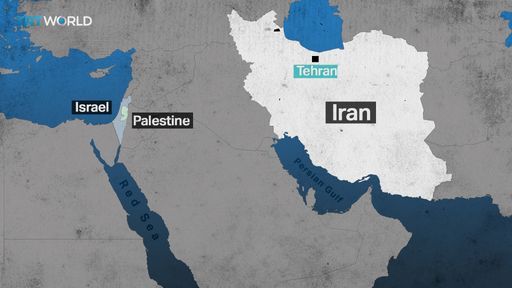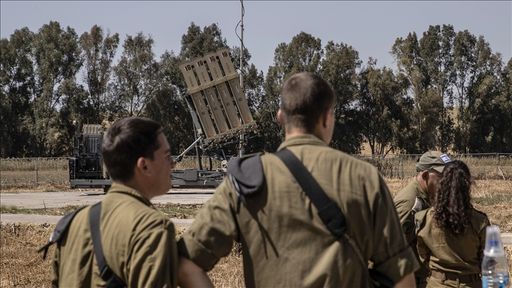Israel launched a major attack on Iran, drawing their long-running shadow war into the open conflict in a way that could spiral into a wider, more dangerous regional war.
The strikes early Friday set off explosions in the capital of Tehran as Israel said it was targeting Iranian nuclear and military facilities. Iranian state media reported that the leader of Iran’s Revolutionary Guard Corps and at least four top nuclear scientists had been killed.
Israel's attack comes as tensions have escalated over Iran’s rapidly advancing nuclear programme, which Israel sees as a threat to its existence.
The Trump administration revived efforts to negotiate limits on Iran’s uranium enrichment in exchange for the lifting of economic sanctions. But the indirect talks between American and Iranian diplomats have hit a stalemate. The attack has pushed the region into a new and uncertain phase.

What do we know so far?
Israel hit nuclear sites and killed the Revolutionary Guard chief along with other senior Iranian officials. Israeli leaders said the attack was aimed at preventing Iran from acquiring a nuclear bomb as the country enriches uranium and comes close to a short, technical step away from weapons-grade levels.
Iran has long said its programme is peaceful, and US intelligence agencies have assessed Iran was not actively building a weapon.
In a video announcing the military attacks, Israeli Prime Minister Benjamin Netanyahu said the strikes hit Iran's main enrichment site, the Natanz atomic facility, and targeted Iran's leading nuclear scientists.
He said that Israel had also targeted Iran's ballistic missile arsenal. Iranian state TV reported that the head of Iran’s Revolutionary Guard and one of Iran's most important commanders, General Hossein Salami, had been killed. Residents of Tehran reported hearing huge explosions. Iranian state TV broadcast footage of blown-out walls, burning roofs and shattered windows in residential buildings across the capital.
It reported that blasts had set the Revolutionary Guard's headquarters ablaze.

Israel closed its airspace
Bracing for retaliation, Israel closed its airspace and said it was calling up tens of thousands of soldiers to protect the country's borders. Netanyahu claimed Friday that if Iran wasn't stopped, "it could produce a nuclear weapon within a very short time.”
But it likely would take Iran months to build a weapon, should it choose to do so. It also hasn’t proved its ability to miniaturise a bomb to be placed atop missiles. Iranian officials have openly threatened to pursue the bomb.

Nuclear weapons
Tensions over Iran's rapid nuclear advances and growing reserves of highly enriched uranium are surging seven years after President Donald Trump unilaterally withdrew the US from Tehran’s 2015 nuclear deal with world powers.
For the first time in two decades, the atomic watchdog agency on Thursday censured Iran for failing to comply with nuclear nonproliferation obligations meant to prevent it from developing a nuclear weapon.
In response, Iran said that it would open a previously undisclosed enrichment site and accelerate production of 60 percent highly enriched uranium, which could be easily processed to the 90 percent level used in nuclear weapons.

Iran's nuclear sites have long been a flash point. Iran has two main enrichment sites, Natanz, in central Isfahan province, and Fordow, near the Shiite holy city of Qom, some 90 kilometres (55 miles) southwest of Tehran. Both are designed to protect them from potential airstrikes.
Natanz is built underground on Iran’s Central Plateau, and has been targeted several times in suspected Israeli sabotage attacks, as well as by the Stuxnet virus, believed to be an Israeli and American creation, which destroyed Iranian centrifuges.
Fordow is buried deep inside a mountain and protected by anti-aircraft batteries. It also hosts centrifuge cascades, but it isn’t as big a facility as Natanz.
Trump warned Netanyahu
Both sites have been the focus of the Trump administration's recent push to negotiate a new nuclear deal with Tehran.
Trump said that he warned Netanyahu against launching an attack on Iran's nuclear facilities while diplomatic efforts were underway.
US special envoy Steve Witkoff was expected to meet his Iranian counterparts in Oman for a sixth round of negotiations to start Sunday. It wasn't clear if those talks were still on.
Hours after the strikes, Iran’s Supreme Leader Ayatollah Ali Khamenei threatened Israel would face “severe punishment."
“The powerful hand of the armed forces of the Islamic republic will not let (the attacks) go unpunished," the leader added in a statement posted online. Other Iranian officials echoed his warning, pledging vengeance.
State TV aired footage of Iranians chanting “Death to Israel!” and “Death to America!" From Washington, Trump said that the US had not been involved in the attack and warned Iran against retaliating against American interests in the region.
















